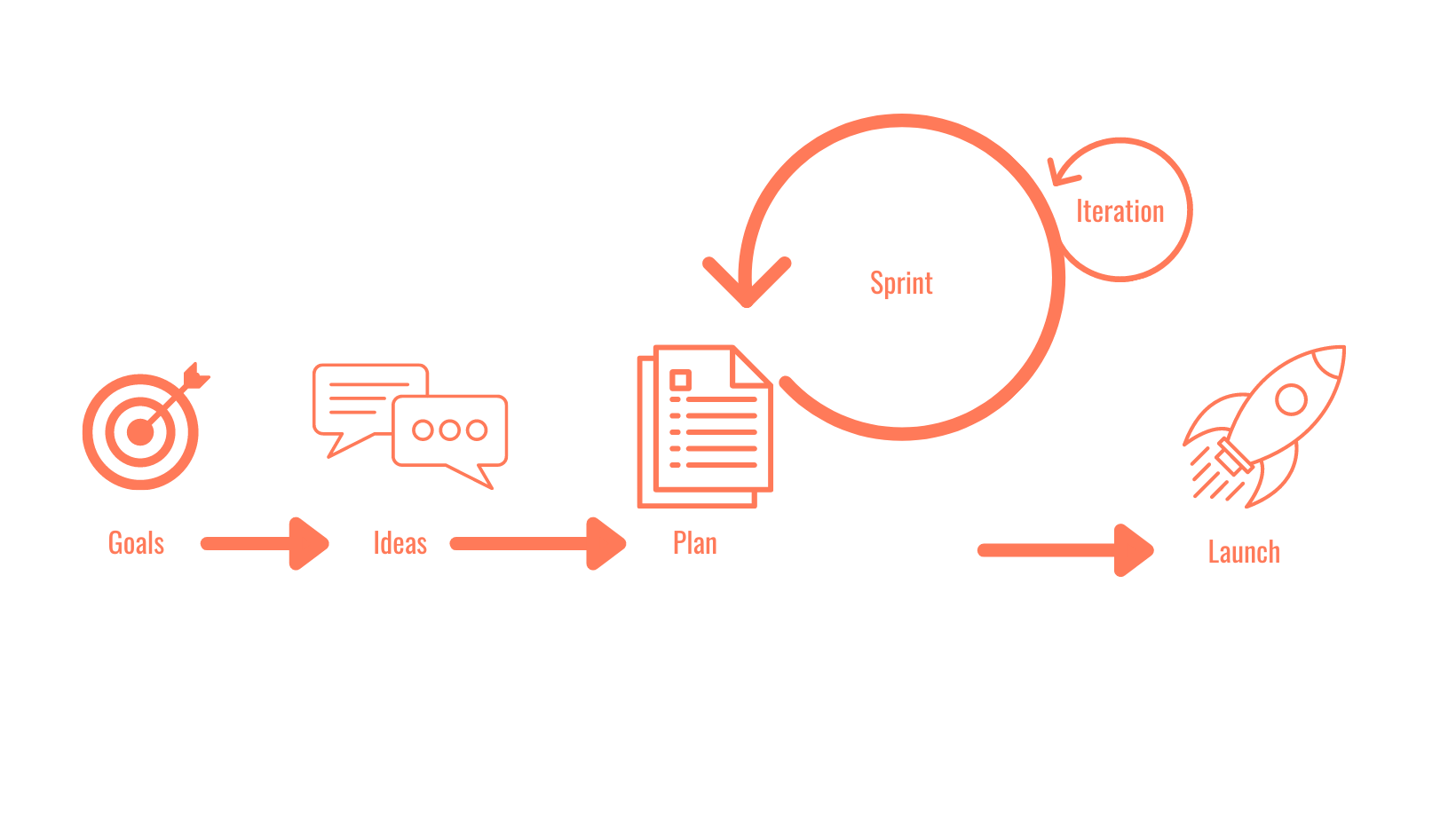For those of you who have experienced a website redesign, you know it’s quite the journey. Sometimes it feels like you’re hiking a mountain or traveling to a different country. You need a budget and resources, and you have to make all kinds of preparations for this journey to be successful.
The traditional web design process is broken, and that can make it frustrating.
When you start using an Agile methodology for your website, what can you expect? How does it compare to the traditional web design or waterfall processes?
What Is The Waterfall Web Design Process?
The waterfall method is moving from one phase to another, one at a time, without revisiting the completed phases until all other phases are complete.
Think of it as building a house: You lay the foundation first before you ever start working on the roof. Once the foundation is complete, it’s time to move on to the next phase: Framing the house.
What you will not do is get halfway done with the roof and then decide to “tweak” the foundation. While you can add on to a finished house later, “tweaking” the foundation after the house has been framed will require a huge revision of everything, not just the foundation.
To build a house, you go from one phase to the next, driving all of them to completion.

What Is The Agile Web Design Process?
Below is a visual description of what to expect with the agile web design process.
The agile process is about getting something to market very quickly, even though it might not be absolutely ready for prime time. Even though it’s not a “finished” product, it’s launched so you can use it to quickly learn what’s best, and make iterative changes to arrive at an optimized final product.
You launch small so you can test, learn, and react before investing in a “big” design solution.

So which is better?
The answer to this question is the ever famous, "well, it depends". I know, not the shocking insight you were hoping for. But, it really does depend on a LOT of factors.
Generally speaking though, in our estimation the agile methodology is a far more robust and adaptive system to deploy. What we've found over years of work building simple and complex websites, landing pages, marketing campaigns is many of the time, when we spend too much time in the research, strategy and build phase we lose a LOT of momentum.
It is very difficult to stay on task and maintain a sense of forward progress. It's easy to get sucked down each rabbit hole that presents itself.
Using an agile approach helps clients and providers stay on task, achieve measurable results and provide adequate time to analyze and make informed decisions on where and how to make improvements.
Imagine being able to have a fully functional website in a fraction of the time and be able to push traffic and visitors to it early in order to let the data guide yuur decision making process. Or, you can wait and wait for 6 months to build a "perfect" website only to find out then that it "isn't working" and you don't know why.
I am sure what most people would choose...